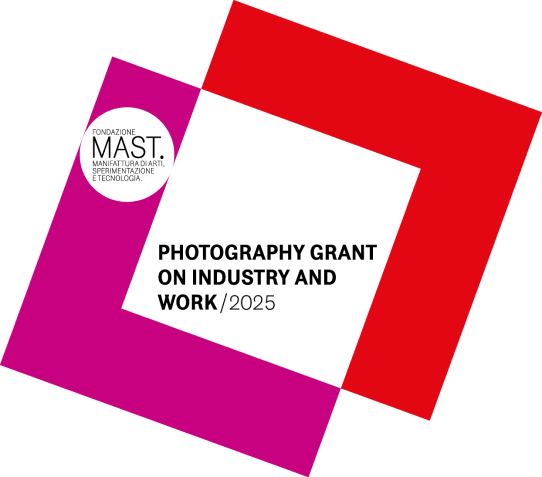Press Release fifth edition 2016/17
GD4PhotoArt – Photography meets Industry
THE EXHIBITION OF THE FOUR FINALISTS OF THE GD4PHOTOART COMPETITION AND ANNOUNCES THE WINNERS EX AEQUO OF THE FIFTH EDITION OF THE AWARD: SARAH CWYNAR AND SOHEI NISHINO
“The jury has decided to award the prize ex-aequo to Sohei Nishino and Sara Cwynar. The four finalists’ works were all significant and in compliance with the competition. The deciding factors in the jury’s selection were, in particular, the complexity of the work’s contents and the poetic vision of Sohei Nishino, on the one hand, and the mixture of intellectual debate and visual freshness of Sara Cwynar’s video, on the other,” says Urs Stahel, the exhibition’s curator and member of the jury.
This year, the biennial selection dedicated to emerging young photographers is in its fifth edition with a new guise, starting from its name, which has become MAST FOUNDATION FOR PHOTOGRAPHY GRANT ON INDUSTRY AND WORK, and is included as part of the project on industrial photography coordinated by the MAST Foundation.
Established a few years ago, when the MAST Foundation’s identity was taking shape, the award supports research on the image of industry and work, giving voice to new generations of artists. Through the promotion and acquisition of the participants’ works, over time, the contest has contributed to the creation of a collection of contemporary visions that are now fully integrated into the MAST Foundation’s cultural offer, enriching it with the new, original, never-before-seen visions of young photographers from all over the world.
Urs Stahel, curator of the MAST PhotoGallery and the exhibition, explains the objectives of the award: “To show the essential, to emphasize structural aspects, to capture abstract knowledge and the essence of human behavior in images – to research, investigate, develop and produce – to provide a photographic representation that makes the informative and emotional aspects, the concrete data and the meaning, the descriptive and the metaphorical plane possible and accessible: this is the great task of young photographers today. And it is this task that the MAST Foundation for Photography Grant intends to support.”
Mari Bastashevsky, Sarah Cwynar, Sohei Nishino and Cristóbal Olivares are the four young photographers, selected from a list of 35 candidates from all over the world, who have developed original and neverbefore- published projects for the MAST Foundation. The results are works that are very different from one another but connected through the extreme relevance of the themes tackled and the numerous chosen means of representation. Mari Bastashevski (St. Petersburg, Russia, 1980), in the project Emergency Managers uses complex installations made up of photographs, documents, texts and interviews to investigate the water crisis in the city of Flint that began in 2013-2014, when the sources of the drinking water supply were transferred from Detroit to the city itself and the Flint river, causing lead contamination in part of the population. As the artist writes, the work highlights the relationship between state officials and companies that encourage and support crises in the status quo, where violence rises up to become the usual behavioral norm”.
Sarah Cwynar (Vancouver, Canada, 1985) in The Color Factory, uses a video and nine photographs to take us inside a cosmetics company and into the mechanisms of commercial color production to open a broader reflection “on the standards of color, beauty and capitalism, as models imposed in the experience of human life”, as the artist states. There is someone who makes decisions; standards are set by a company, an economic group, an authority. A field that continues to be strongly determined by the way men look at women.
Sohei Nishino (Hyogo, Japan, 1982) created a representation of the Po river that is something halfway between a map and a diorama. He uses a technique that he developed over the past decade to create urban landscapes. For this project, he traveled along the river from the source to the Delta, taking hundreds of photographs which he then he printed, combined and arranged manually in large tableaux. Combining micro and macro perspectives, he obtained an image that, from a distance, almost seems abstract and, from closeup, is a lively and poetic representation of the river, understood as a fundamental condition for existence.
Cristòbal Olivares (Santiago, Chile, 1988) in the project The Desert, uses video, images of desolate landscapes and documents to recount the dramatic migratory phenomena taking place between the Dominican Republic and Chile, journeys along minefields or mountains that exceed 3800 meters in altitude with extreme temperatures. Olivares enlarges his photographs of landscapes, often empty, and with these creates backgrounds that are hung directly on the wall. Above, to the side of it or next to it he adds the framed portraits of the migrants. In his videos, the photographer then gives these migrants the opportunity to tell their stories.
